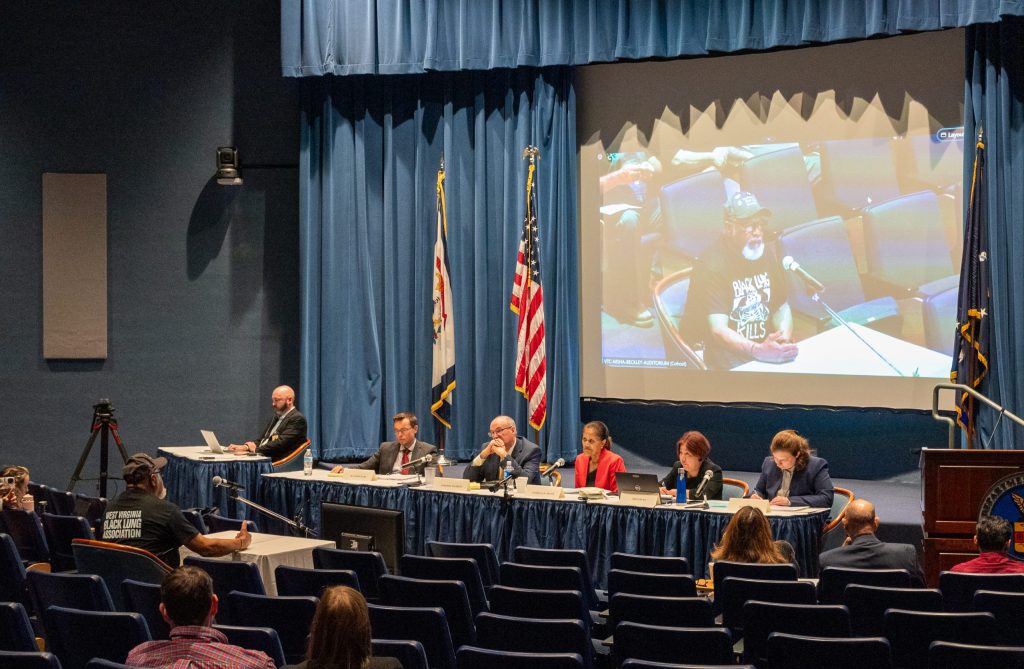A Vision of Virginia’s Energy Future
Commentary by Tom Cormons
Special to The Voice
My 21-month-old daughter seems to know no greater joy than that of splashing in the cool, clear waters of our mountain creeks, or walking along a rocky trail beneath the lush hardwood canopy, happily chewing on a birch twig.
A favorite destination is the Blue Ridge’s Humpback Rocks. From there—on a good day—you can clearly see our town, nestled in the foothills 25 miles to the east. Too often, however, the view is obscured by smog caused mainly by emissions from coal-fired power plants—plants fed by coal obtained by blowing up mountains not unlike the one we stand on, and not far away. Southwest Virginia’s Wise County, a half-day’s drive away, is the second most strip-mined county in all of Appalachia.
The smog is a reminder that the air my daughter breathes is polluted, and that emissions of CO2 from power plants are causing a climate crisis with untold implications for her entire generation.
Virginians pay a steep price for our electricity. According to a study released by the Clean Air Task Force, in Virginia alone fine airborne particles from coal-fired power plants cause nearly 1,000 deaths, over 1,400 non-fatal heart attacks, and 24,000 asthma attacks each year. Coal plant emissions also make Shenandoah National Park the second most polluted of our national parks. Many of the state’s rivers bear fish consumption advisories due to contamination with mercury deposited from coal plant emissions. And mountaintop removal has already destroyed 67 mountains in Virginia; a total of 156,000 acres of mountainous terrain have been destroyed in the state.
Fortunately, the state has alternatives to its current approach to energy. According to the Virginia Coastal Energy Research Consortium, the state can meet 20 percent of its electricity demand with offshore wind turbines covering an area just the size of Virginia Beach, at a cost that is competitive with coal and insulated from the prices of fossil fuels. Virginia also has significant onshore wind potential, which is even more economical.
The lowest-hanging fruit is Virginia’s vast energy efficiency potential. A report by the American Council for an Energy Efficiency Economy (ACEEE) shows that 27 percent of the state’s projected electricity demand can be met through cost-effective energy efficiency measures by 2025.
Energy efficiency means getting more use out of less energy, through more efficient lighting, heating and cooling systems, and better windows and insulation. Efficiency measures are much cheaper than electricity generation—about three cents per kilowatt-hour for efficiency versus upwards of 10 cents for power from a new coal plant—so they can dramatically lower consumer electric bills. In Austin, Texas, for example, the city’s utility scrapped plans to build a large 500 megawatt power plant and invested instead in efficiency measures, saving as much electricity as the plant would have generated—avoiding a new pollution source and saving consumers money.
Efficiency also employs more people per kilowatt-hour than coal. According to ACEEE, even relatively modest efficiency investments would directly create nearly 10,000 net jobs in Virginia by 2025. And a report by the Appalachian Regional Commission shows that efficiency measures in Appalachia could produce 77,000 jobs in the region by 2030.
During 2009, Virginia citizens weighed in with their legislators on the subject of energy efficiency. As a result, Virginia’s largest electricity provider is now proposing the state’s first major investment in efficiency by a utility. While the proposal would capture only a portion of the state’s untapped efficiency potential, it demonstrates the extent to which citizens have already influenced energy policy in the state.
As corporate interests compete with citizen voices for attention on energy issues, the struggle to change energy policy will require continued diligence. But one look at my toddler daughter bounding through the woods makes me sure the fight is worth it.
To learn more about Wise Energy for Virginia’s campaign against coal-fired power plants and mountaintop removal, and for energy efficiency, please visit their website at wiseenergyforva.org or call Appalachian Voices’ Virginia office at 434-293-6373.
Negawatts – Make Electricity By Saving It
Energy efficiency is one of the most effective methods of curbing our carbon footprint, and it can happen one negawatt at a time.
Coined by Amory Lovins, “negawatt” describes conservation as a means of actually generating electricity through the act of saving it. For instance, if your power consumption is lowered, for every Megawatt you save, a negawatt of energy is made available to the rest of the grid. If a person uses 60 megawatts of electricity less during a month thanks to energy efficiency measures—installing better appliances, applying window and wall weatherization, using compact fluorescent bulbs—they have actually made 60 negawatts of electricity available for their neighbors to use.
Science-minded individuals may want to read Lovins’ original discourse of negawatts at the 1989 Montreal Green Energy Conference, available online at ccnr.org/amory.html. Everyone else can be content to know that through reducing consumption via energy efficiency, they are actually adding to the energy grid.
Related Articles
Latest News

Leave a comment
Your email address will not be published. Required fields are marked *




